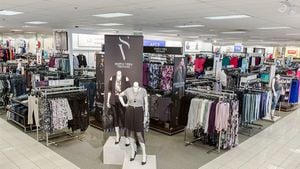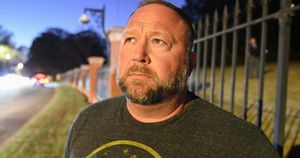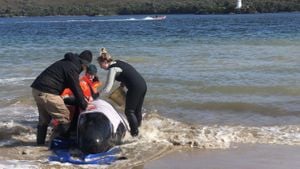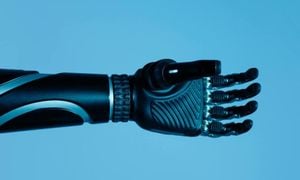Boeing’s troubled Starliner spacecraft has made its uncrewed return to Earth, successfully landing at White Sands Space Harbor, New Mexico, marking the end of a particularly challenging test flight. This mission, which began with high hopes when the spacecraft launched on June 5 with two experienced NASA astronauts onboard, Butch Wilmore and Sunita Williams, has been riddled with setbacks.
Instead of ending with the astronauts’ homecoming, the mission concluded with the Starlinger safely undocking from the International Space Station (ISS) on September 6, 2024, at 6:04 p.m. EDT. The flight plan initially intended to have the astronauts return following the spacecraft's landing. Yet, due to various technical issues, including thruster malfunctions and helium leaks, NASA made the fateful decision to have the Starliner return without its crew.
This decision came after officials identified serious concerns about Starliner’s reaction control thrusters, which had previously underperformed. Steve Stich, the manager of NASA's Commercial Crew Program, admitted during press briefings, "Leaving them there was a tough decision to make. It was really hard to determine whether to be uncrewed or not.” His emphasis on safety reflects the historical caution NASA has taken since the tragic Challenger and Columbia disasters.
Following its undocking, Starliner performed the necessary deorbit burn at 11:17 p.m. EDT, initiating its descent. The capsule slingshotted across the Pacific Ocean before executing its parachute-assisted touchdown at 12:01 a.m. EDT at White Sands—a landing described by $Tag{Steve Stich} as "a bullseye landing." The successful free-fall touch down was certainly viewed as a step forward for Boeing’s beleaguered program.
Recovery teams quickly reached the spacecraft post-landing for inspections. Meanwhile, Wilmore and Williams will remain aboard the ISS until late February, awaiting transportation on the next SpaceX Crew Dragon mission, which has now been adjusted to accommodate their return.
Despite the safe return of Starliner, the road has been rocky for Boeing. The spacecraft's first flight was delayed significantly, nearly four years, due to earlier technical hardships, and the company has had to deal with issues beyond the spacecraft itself, including public scrutiny around the safety of Boeing’s aerospace products following the deadly 737 Max incidents. This was compounded by its recent challenges with the upgraded 777 aircraft operations.
With the service module of Starliner jettisoned before re-entry—burning up upon re-entry—engineers have no access to the hardware to ascertain the root causes of the technical glitches experienced during the mission. Further data analysis and potentially redesigns will stretch timelines for any subsequent flights—which could now be delayed to late 2025 or beyond.
Reflecting on the importance of the successful landing, Ken Bowersox, NASA’s space operations director, stated, "Even though it was necessary to return the spacecraft uncrewed, NASA and Boeing learned an incredible amount about Starliner in the most extreme environment possible." He assured there would be more collaboration between NASA and Boeing to push for certification of Starliner for future crewed missions.
The astronauts, accustomed to the possibility of having their missions extended—such as Frank Rubio, who spent over 12 months aboard the ISS due to technical issues—are now preparing for their longer-than-expected stay. Wilmore and Williams, expecting to conduct various operations at the station, will now spend eight months instead of the planned eight days.
NASA’s continued investment and focus on enhancing the capabilities of the Starliner demonstrate the agency's commitment to its commercial crew program, aimed at enabling reliable transportation to and from the ISS. On the upside, SpaceX has been operating regularly with its Crew Dragon, which serves as Boeing’s primary competitor.
Moving forward, all eyes will be on Boeing as the company works through the prominent challenges presented by this latest mission. From thorough data analysis and potential redesigns, to restoring public confidence, Boeing has significant work to do. “What we really need to go do is look at the things which didn’t perform the way we expected,” said Steve Stich, signaling the road of recovery will demand intensive scrutiny and dedication.
The Starliner mission, full of hurdles and uncertainty, finally delivered the hope of safe space travel with its successful return. Yet, as it lands on solid ground, the future mission readiness of the Starliner remains cautious sanity-checked by its past performance.



